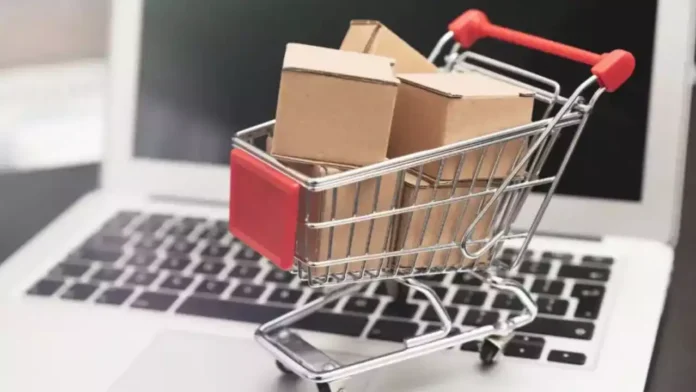Listed companies and industry trackers have noted a slowdown in online consumption during the March quarter across various segments including electronics, wearables, and beauty products.
In the fourth quarter, Delhivery, a logistics firm, reported a 13% sequential decline in its express parcel shipments, which serve as a proxy for ecommerce delivery volumes, down to 176 million.
Sahil Barua, co-founder and CEO, pointed out that the decline in the March quarter followed a robust October-December period, typically marked by festive season sales on ecommerce platforms. Despite this, the company’s delivery volumes were down by 2% year-on-year.
In its analysis of Delhivery’s results, brokerage firm Citi acknowledged the subdued online consumption but expressed confidence that it wouldn’t jeopardize the long-term growth expectations of 15%-20% in ecommerce.
Continue Exploring: Ecommerce industry backs govt’s mandatory quality norms for consumer reviews
Nykaa, a beauty and fashion retailer, highlighted the trend of consumer brands reallocating their advertising budgets towards offering increased discounts to stimulate demand in the currently subdued market. During the post-earnings analysts call on May 22, Anchit Nayar, CEO of Nykaa E-retail, expressed optimism that brands would revert to investing in advertising once demand recovered.
Likewise, Honasa Consumer, the parent company of the beauty and personal care brand Mamaearth, observed single-digit growth for its flagship brand during fiscal year 2024. Consequently, it is adjusting its offline strategy to enhance both growth and margins.
Assessment of Overall Ecommerce Sales
According to an executive at a prominent third-party logistics firm, overall ecommerce sales remain lackluster, with growth likely to be below 15%, in contrast to the typical approximate 20% growth rate.
The logistics expert continued, “Due to the lack of big events and the large amount of sales made over the previous holiday season, apparel and smartphone shipments—which typically drive overall ecommerce growth—have not had the chance to develop significantly. But because of the early summer season, appliance sales have improved, which has provided some help.
According to reports, demand for air conditioners (ACs), fans, and coolers surged by 80%, 20%, and 45%, respectively, during March and April compared to the previous year on Amazon India. Meanwhile, on rival platform Flipkart, AC demand witnessed a 50-60% increase in March year-on-year.
According to a senior ecommerce executive, although the first quarter experienced a decline in consumption growth, volumes steadily improved on a month-on-month basis.
Regarding smartphones, the move towards offline purchases and the absence of significant releases have contributed to subdued sales. According to a report by market intelligence firm Counterpoint Research, Indian smartphone shipments recorded an 8% year-on-year growth from January to March. However, it’s worth noting that the low base of the corresponding period last year was a key factor driving this growth.
Continue Exploring: Ecommerce sees modest Q1 growth at 12-15%, industry anticipates 20% uptick by April
The report further noted that the offline share of total sales reached 64%, representing the highest quarterly figure since the onset of the Covid-19 pandemic.
Nevertheless, in the smartphone sector, premiumization persisted as the market experienced an 18% growth in terms of value. The premium segment, encompassing products priced above INR 30,000, accounted for 20% of the total sales volume and 51% of the total sales value for the quarter, marking its highest-ever contribution, as highlighted in the report.
“The trend we’re observing is that an increasing number of smartphone purchases appear to be upgrades, with users holding off for major discount periods, and this phenomenon is also reflected in the premiumization,” stated the logistics executive mentioned earlier.
According to data from research firm IDC, shipments of wearable devices such as earphones and smartwatches through online channels decreased by 14.1% year-on-year, marking the second consecutive quarter of decline.
A leading executive at a smartwatch manufacturer noted that during the December quarter, multiple brands shipped surplus inventory for the festive season, which unfortunately did not meet the anticipated demand levels.
“The January-March period didn’t witness significant shipments due to the high levels of inventory from the preceding quarter,” the executive explained. “This indicates insufficient demand as well. Additionally, it’s evident in the declining average selling prices (ASPs) of products like smartwatches and earphones.”
A venture investor specializing in consumer brands noted emerging macro indicators suggesting an uptick in demand in tier 2 and tier 3 cities.
“Some early indicators, such as increasing two-wheeler dispatches and FMCG sales in smaller towns, are becoming apparent,” he explained. “Once this trend gains momentum, discretionary spending will also rise, reflecting in ecommerce volumes across the board.”





